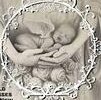Choosing Burial Gowns For a Loved One
When a loved one passes away, it’s important to remember them with love and respect. While navigating loss is often emotionally challenging, there are many practical decisions that must be made. One of these is the choice of clothing to dress the departed in for their viewing and funeral service. Many families choose to dress their deceased loved ones in the outfit they would have worn in life. This can be a comforting gesture and a way to honor their unique personality and style. If the departed had specific instructions or requests, it’s always a good idea to honor those wishes. However, not all families have this information to draw on and may need help in deciding what kind of clothing would be best for their loved one. In this article, we will explore some of the key considerations for choosing burial clothes and offer some helpful tips. When choosing burial clothes for a loved one, consider their lifestyle and personality. Were they someone who tended towards formal attire or was their style more laidback and casual? Did they follow particular cultural or religious customs? If they did, honoring these traditions can add a profound layer of meaning and respect to their funeral ceremony. Many people find it comforting to dress their loved one in a favorite pair of jeans or a tee shirt they enjoyed wearing in their lifetime. Likewise, it can be very moving to have them dressed in the soft and comfortable robes they might have worn as night gowns or pyjamas in their later years. These kinds of clothing can symbolize how much they were loved and cared for in their lifetime and are a powerful way to remember them. Alternatively, some people prefer to have their departed buried in an ensemble that is more reflective of their final journey. In the past, this might have been a full-length dress or suit, but now there are also plenty of options that mimic these types of garments. These types of clothing are typically made from soft, silky fabrics that feel comfortable against the skin. They are designed to be easy for the funeral director to dress the departed in and come in a wide range of attractive colors and sizes. Some are also designed to be trimmed with embroidery or other decoration that can commemorate the departed. Clothes with metal, rubber or plastic are usually unsuitable for burial because they can cause damage to the casket. Clothes that are too tight can be uncomfortable on the body and may become blotchy after embalming fluid has been applied. For this reason, it’s a good idea to choose loose-fitting clothing for the departed. If you need guidance in navigating the delicate process of selecting burial clothes for your loved one, don’t hesitate to reach out to family members and friends for support. In addition, a skilled funeral director can provide valuable input and understanding during this difficult time.
